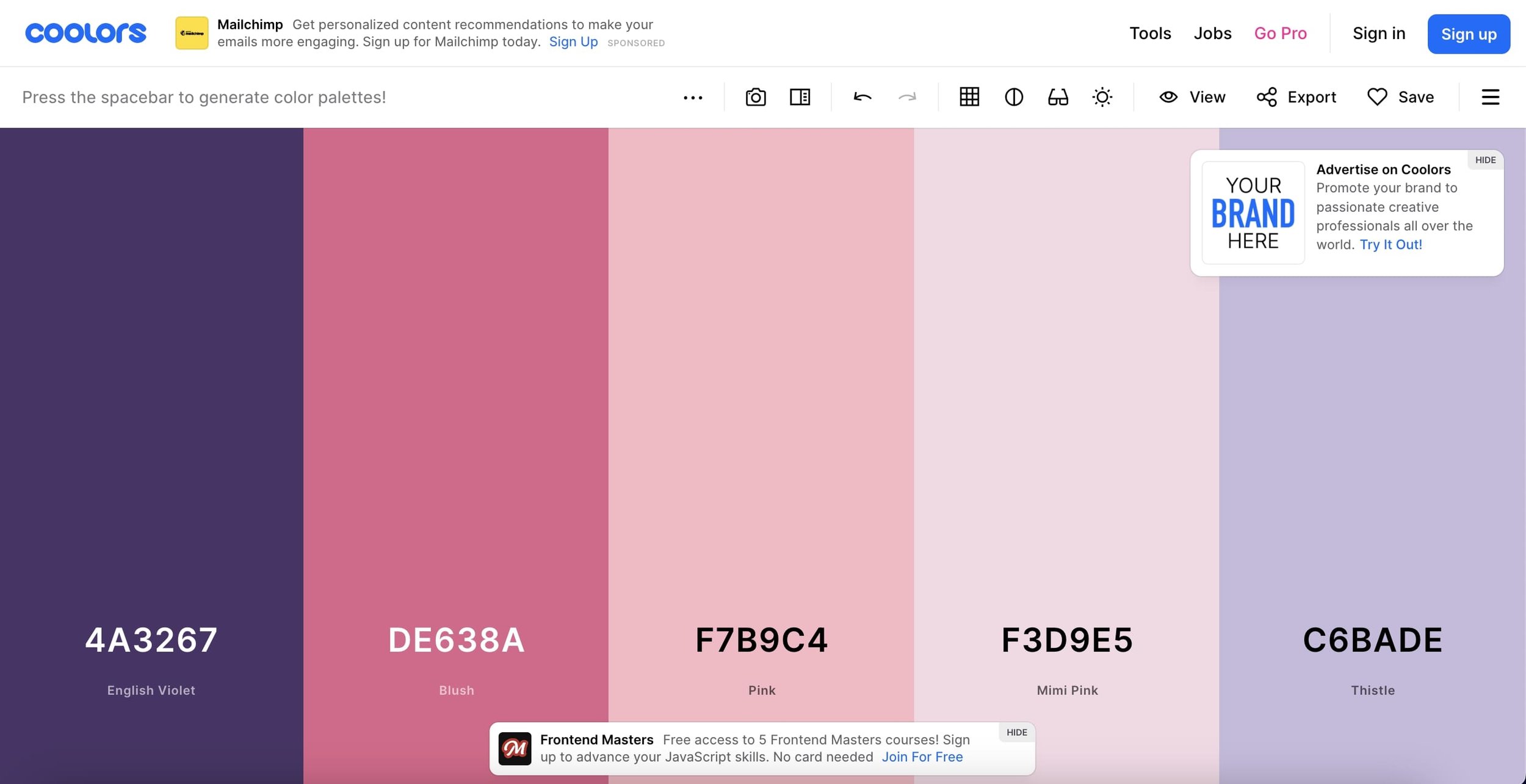Blitz News Digest
Stay updated with the latest trends and insights.
Color Me Crazy: Choosing the Right Palette for Your Website
Unlock the secrets to stunning web design! Discover how to choose the perfect color palette for your website and captivate your audience.
Top 5 Color Palettes for Website Design in 2024
As we move into 2024, the landscape of web design continues to evolve, with color palettes playing a crucial role in shaping user experience and brand identity. This year, top designers are embracing a blend of bold hues and soft tones to create visually striking and memorable websites. Here are the top 5 color palettes that you should consider for your website design:
- Neon Dream: Bright, vibrant colors like electric blue, neon pink, and lime green dominate this palette, perfect for brands targeting younger audiences.
- Earthy Tones: Rich browns, olive greens, and terracotta shades evoke a sense of warmth and comfort, making it ideal for eco-friendly and wellness brands.
- Pastel Perfection: Soft pastels like pale yellow, mint green, and lavender offer a calming aesthetic, suitable for creative and lifestyle websites.
- Classic Monochrome: A timeless choice, black, white, and shades of gray create a sleek and sophisticated look for minimalist designs.
- Bold and Bright: Combining primary colors like red, blue, and yellow can create a playful yet professional feel, which is great for tech startups and educational platforms.

How Color Psychology Impacts User Experience on Your Website
Color psychology plays a crucial role in shaping user experience on your website by influencing emotions and behaviors. Different colors evoke specific feelings; for instance, blue often conveys trust and reliability, making it an effective choice for financial websites. Conversely, colors like red can create a sense of urgency, which can be beneficial for sales promotions. Understanding how each color can affect user perception can help you strategically design your site to guide visitors toward desired actions, whether it's signing up for a newsletter or making a purchase.
Additionally, the application of color psychology can enhance brand recognition and cohesion. Consistent use of colors that align with your brand identity not only fosters a sense of familiarity but also contributes to a positive user experience. For example, if your brand is associated with eco-friendly products, utilizing greens and earth tones can reinforce your commitment to sustainability. By carefully selecting and applying colors throughout your website, you can create a harmonious visual environment that resonates with your audience and enhances their overall experience.
Choosing the Perfect Color Scheme: Tips and Tools for Designers
Choosing the perfect color scheme is essential for making a lasting impression on your audience. Color not only evokes emotions but also communicates your brand's identity. To begin with, consider the psychology of colors; different colors can influence perception and behavior. For example, blue is often associated with trust and professionalism, while yellow conveys warmth and positivity. Creating a color palette that aligns with your brand's message can significantly enhance your design.
Utilizing the right tools can simplify the process of selecting the perfect color scheme. Online platforms like Adobe Color and Coolors allow designers to explore various combinations that work well together. When choosing colors, aim for a balance between contrast and harmony. A common approach is to use the 60-30-10 rule, where 60% of the design is the dominant color, 30% is the secondary color, and 10% is an accent color. By following these tips and exploring helpful tools, designers can elevate their projects with a cohesive and appealing color scheme.